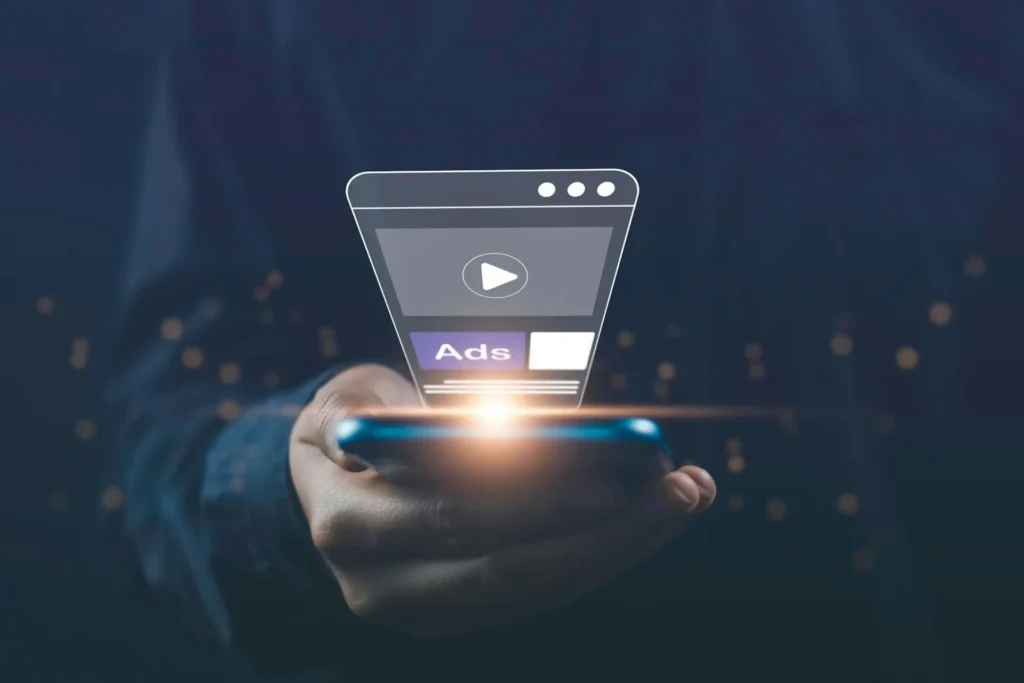The market for programmatic advertising is exploding, with experts saying it could reach USD $1,277.15 billion by 2029. When you look at how easy it is to create ads with programmatic advertising and their potency, it’s no mystery why the market is growing.
Marketers today have demanding roles to play. They are responsible for more than branding and messaging. Today’s marketers must also help their organizations increase revenue.
To be successful, digital marketers need real-time reporting capabilities.
Some organizations may still use direct mail and billboards to improve brand recognition and attract new customers. However, these traditional methods will never be as cost-effective as digital media strategies. Unfortunately, gathering data for traditional marketing methods can be tricky.
Digital marketing and programmatic advertising let algorithms do the hard work. It helps human marketers make informed decisions about what to do going forward.
The future of marketing is programmatic advertising, and here is why.
Types of Advertising For Digital Media Buyers
Digital media buying means you are selecting and purchasing ads on digital platforms. This includes social networks and websites.
When you purchase digital media, there are three types. First, there are manual buys. This is when you manually bid for inventory through an ad exchange such as Google Ads, and you can manage the bids.
Next, there are direct buys, which is the process of negotiating run times and ad rates direct through a platform that allows advertising. Finally, there are programmatic buys.
What Is Programmatic Advertising?
It is a way to leverage algorithmic tools and automated technology for media buying. Specifically, the term “programmatic” refers to the process an organization uses to purchase and sell ads in the advertising space. It differs from traditional media buying strategies because it has an automated approach.
Automating the media buying process leads to incredible benefits like these.
1. Reduced Ad Cost
The primary key benefit is that programmatic advertising is more effective, which is why it drives down the cost for advertisers. In fact, compared to a direct or manual buy, programmatic advertising is a fraction of the cost. Despite its lower cost, programmatic buying far surpasses the targeting of traditional advertising avenues, making it tremendously more efficient.
Programmatic buying is generally sold on a CPM model or cost-per-thousand-impression basis. Other types of media purchases, however, could be sold via CPC (cost per click), CPA (cost per action), CTC (click-through conversion), or CPM.
2. Enhanced Audience Reach
Since the CPM model is significantly cheaper, you can cast a wider net. Beyond this, programmatic advertising covers more channels beyond social media or Google, such as CTV (Connected TV), native, display, and video ads. Programmatic buying is a fantastic way to beef up your brand awareness.
3. Transparency
Marketers can see how their programmatic advertising is performing. They can see the exact sites where the ads are running and who is viewing their ads. Marketers now have a tool that helps them know they are reaching the right end users.
4. It Makes Advertising Personalized
With real-time bidding, marketers can enjoy immediate ad serving and precise audience targeting with programmatic advertising. It works because of data insights about potential customers.
In other words, ML and AI algorithms can channel an ad unit toward a specific user, basing their decision on what time of day the user would most likely see it. Programmatic advertising considers trading parameters and target options.
5. The Advantage of Data
Programmatic advertising can only work when it has data to pull. There is a significant benefit to having data management platforms gather first and third-party data from existing consumers on various devices, channels, and online and offline sources.
The platform collects real-time information about user segments, which programmatic buyers can use to serve their ads. The marketer needs access to user details for a successful ad-buying process. This includes the prospective customer’s personal preferences, behavioral factors, and tastes.
Because programmatic advertising works based on analytics, the day-to-day reporting will reveal patterns. This is how marketers can determine actions in the future on budget, impressions, win rates, and more.
6. Flexibility
You can immediately access your digital inventory when you work with programmatic advertising. This eliminates the chances of human error occurring. That is because you get multiple types of advertising options with programmatic, and each has its own advantages.
There are ample opportunities, too. You can purchase ads from an array of publishers around the globe.
7. It’s Safe
Fraud is damaging and can lead to malicious traffic. When this happens, people are not seeing your ad, but a bot is viewing it. If this were to happen, you would spend money on advertising that would never convert to a paying customer.
Another issue that can occur if you are not careful is the risk to your brand. This means that your ads could appear alongside content that is inappropriate.
Further, transparency is a challenge. You could run into inflated prices during the process.
That is why programmatic advertising is incredibly beneficial because you get significant transparency throughout the process. This is how you can keep your budget secure and your ads away from fraudsters.
The Benefits of Programmatic Advertising
Welcome to the Magnitude of Change, where they believe advanced technology empowers businesses with positive disruption. They understand businesses like yours can grow with purposeful behavioral change.
With a comprehensive marketing campaign, Magnitude implements today’s best-in-class technologies, like programmatic advertising. The goal is to influence positive and meaningful change.
Click here to connect with the experts at Magnitude today.








